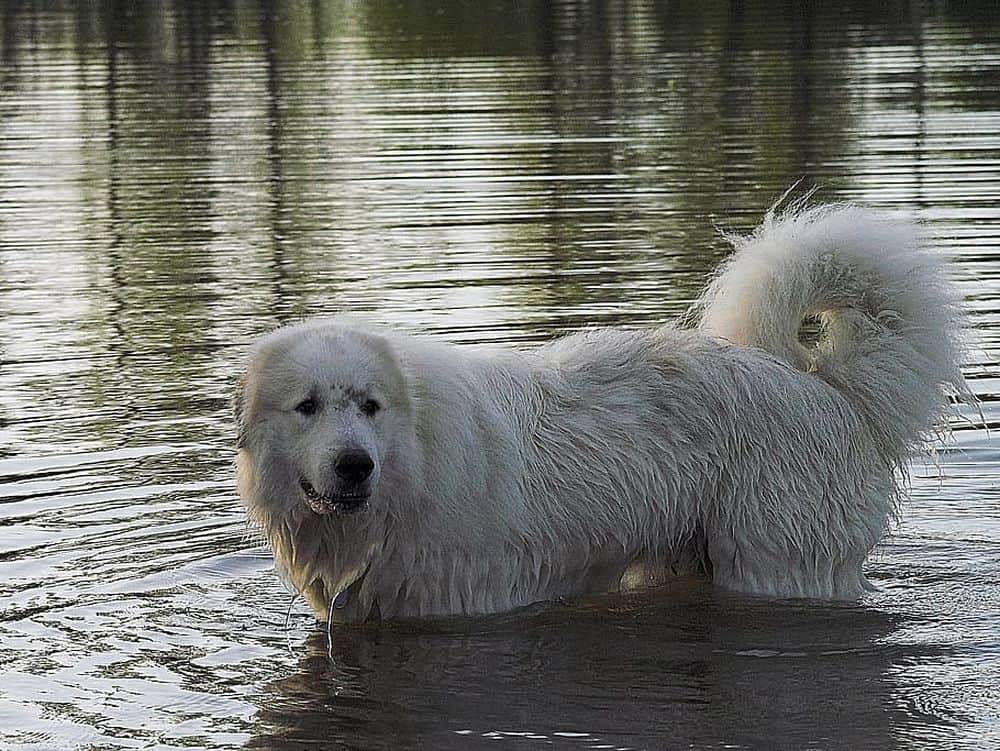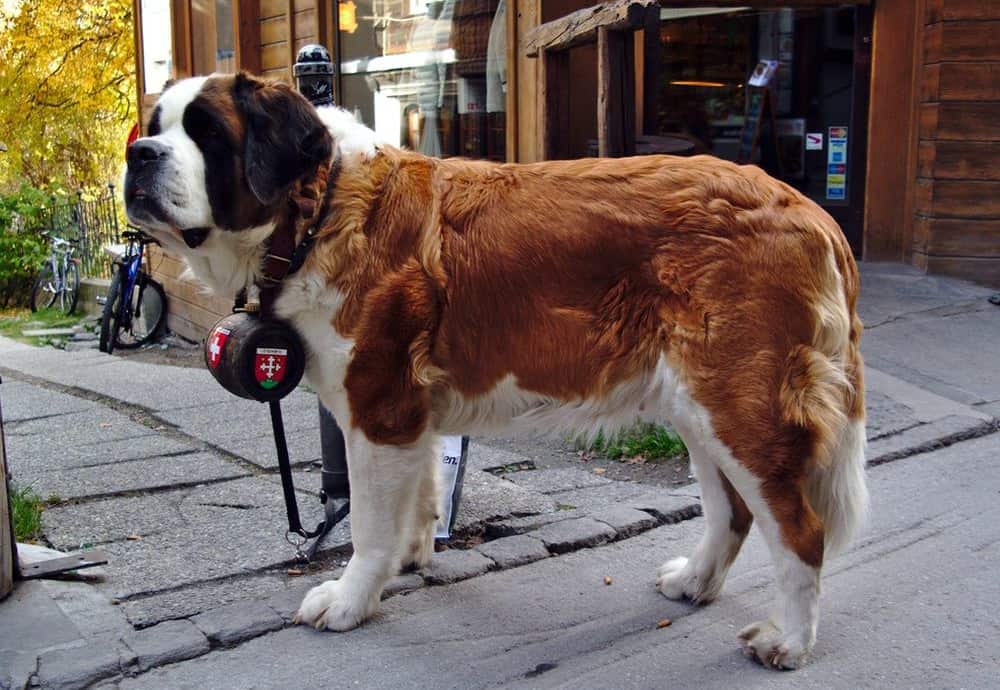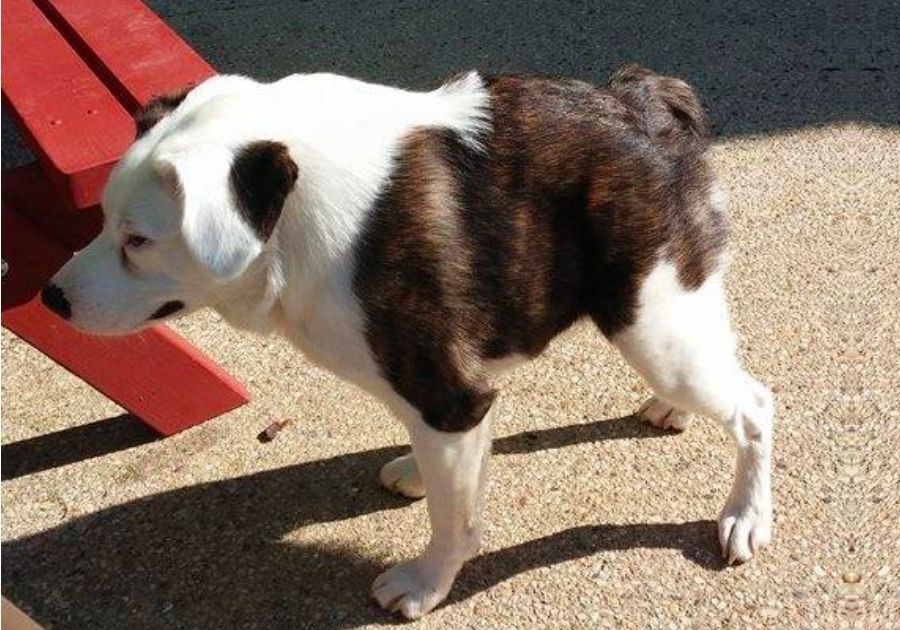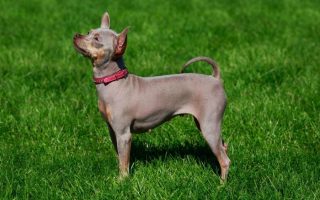If size and strength are among your priorities when looking for a dog, then Great Pyrenees and St Bernard should definitely be at the top of your list.
Like all huge breeds, these dogs are not for everyone.
Due to their size, they can be somewhat difficult to care for and, logically, demand a lot of space.
Still, these two massive and powerful breeds can be very helpful in the household and take care of the tasks some smaller breeds lack the strength for.
In addition, despite their gigantic stature, Great Pyrenees and St Bernards are very calm, gentle, and can be a great choice if you want an affectionate and loyal family pet.
Of course, besides several similarities, the Great Pyrenees vs St Bernard comparison reveals that these breeds are also different in many ways.
| Attributes | Great Pyrenees | Saint Bernard |
| Good For First Time Owners | No | No |
| Good Guard Dog | Yes | Average |
| Apartment Friendly | No | No |
| Good Family Dog | Yes | Yes |
| Shedding | Moderate | High |
| Barking And Howling | Moderate To High | Moderate |
| Height | 25-32 inches (63-81cm) | 26-35 inches (65-90 cm) |
| Average Life Expectancy | 10-12 Years | 8-10 Years |
[wpsm_toplist]
Great Pyrenees – Dog Breed Information

With origins in the Pyrenees Mountains along the French-Spanish border, Great Pyrenees is a very old breed whose lineage can be traced to thousands of years ago.
Initially bred for livestock herding and protection, these dogs also helped their owners in numerous other ways.
Nowadays, they mostly serve as guard dogs and beloved family pets.
Appearance
The Pyrenees are huge and strong dogs, with abundant fur that makes them look even bigger.
Due to their size and thick, fluffy white coat, they’re often compared to polar bears.
Like most dogs with mountain origins, Pyrenees’ body is covered in a thick double coat which protects them from harsh mountain weather.
The long and coarse topcoat can be slightly wavy or straight. The undercoat is finer, denser, and softer.
Most dogs of this breed feature solid white coat color although some may feature yellow, tan, or gray patches.
The big head and thick neck contribute to their imposing stature.
The ears are medium-sized, triangular, and floppy, while the dark-brown eyes have a characteristic intelligent and soulful expression.
Males’ height is about 27-32 inches (69-81 cm) and 105-120 pounds (48-54 kg) weight.
Adult females are 25-29 inches (63-74 cm) high and weigh around 97-120 pounds (44-54 kg).
Temperament
Even though they may not look that way, Great Pyrenees are very calm, patient, and composed dogs.
They’re loyal, trustworthy, and very devoted to their family.
After early socialization, they’re also great and gentle around the kids. Still, due to their size, some caution with children around is advised.
The Pyrenees have a strong protective instinct and are prepared to do anything to protect their humans, even if it means putting themselves in harm’s way.
Throughout its history, this breed usually took care of livestock alone, without human help.
This led to them becoming very independent, and sometimes stubborn, dogs. This may cause some issues during training which requires a lot of patience.
While they enjoy human company, they also appreciate being left alone from time to time.
The Great Pyrenees are not too energetic or active and are perfectly happy to spend a day just lying around.
St Bernard – Dog Breed Information

St Bernard is probably the most famous among the giant dog breeds. Dogs of this breed have frequently appeared on TV and in movies.
They owe their popularity to their powerful, but cute appearance, and also to the series of their heroics.
The St Bernard breed was developed as search and rescue dogs at the Great St Bernard Hospice in the Alps on the Italian-Swiss border.
They have a long history of saving lives and helping people strained on the mountain slopes.
Appearance
St Bernard is one of the largest dog breeds in the world. They’re extremely big, powerful, and strong dogs.
This breed comes in two variants – shorthaired and longhaired.
The coat with shorthaired dogs is smooth and flat. Longhaired St Bernards have a rougher and more dense coat.
The most common color combinations are brown and white, red and white, and brindle and white.
They have large round heads and massive, slightly raised muzzles.
Short and floppy ears hang loose, while eyes are deep-set and commonly dark and a bit droopy.
The tail is long, heavy, and hangs high.
Male St Bernards grow up to 24-28 inches (63-71 inches) and weigh around 119-199 pounds (54-90 kg).
Adult females reach 23-28 inches (60-69 cm) in height and 114-188 pounds (52-85 kg) in weight.
Temperament
St Bernards are very loving, friendly, and gentle dogs. They love spending time with their humans and are happiest when surrounded by family.
They especially enjoy being around children and are very patient with them.
Furthermore, they’re aware of their size and usually extremely careful not to accidentally hurt the little ones.
Furthermore, they’re loyal and protective of their family, so they make good watchdogs.
Their size alone is often enough of a deterrent to the potential impostors.
St Bernards are highly intelligent and eager to please. This makes them easy to train. However, the training should start at a very early age, while you can still manage their size.
They may appear lazy sometimes, but still need at least moderate activity and a lot of space.
Great Pyrenees vs St Bernard – What’s the Difference?
| Great Pyrenees | St Bernard |
 |  |
When comparing Great Pyrenees vs St Bernard, the first thing that catches the eye is the difference in appearance.
They’re both huge dogs but built a little bit differently.
The Pyrenees are higher and slimmer, while St Bernards are shorter, but bulkier and weigh more.
Both breeds need a lot of space, although they can live inside if they have a large yard available when needed.
The Pyrenees are a bit more active and require more exercise. Great Pyrenees are more independent and stubborn.
On the other hand, St Bernards are more social and friendly. They prefer to be with family and don’t like being left alone.
In addition, they’re more patient and tolerant around the kids. All this makes them a slightly better choice for inexperienced owners.
Both breeds have moderate grooming needs, with St Bernards requiring somewhat more maintenance.
Conclusion
If you feel like you need a big dog in your life, you can hardly go wrong with either of these breeds.
Both Great Pyrenees and St Bernards are large, furry, and playful bundles of joy. However, with a huge size also comes a lot of responsibility.
They can be a handful around the house, they eat a lot, and will occupy a large chunk of space in your household.
If you think that you can handle all of this, you will get a loyal friend and a fearless protector of your family and property, no matter which one you choose.







